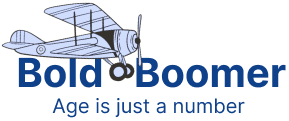As we age, our eyes undergo natural changes, and the risk of eye diseases like cataracts, glaucoma, and age-related macular degeneration increases. For the senior, maintaining eye health is crucial for preserving quality of life and independence. Fortunately, advancements in technology have led to innovative eye health monitoring and care solutions specifically designed for the senior. These technologies not only help in early detection and treatment of eye conditions but also provide ways to manage and mitigate the effects of vision loss.

One of the breakthrough technologies in this area is digital eye health monitoring systems. These systems use high-resolution imaging to capture detailed pictures of the eye, allowing for early detection of potential issues. Advanced software can analyze these images for signs of diseases like diabetic retinopathy or glaucoma, often before the patient notices any symptoms. This early detection is key in managing eye conditions effectively and preventing further deterioration.
Teleophthalmology has emerged as a vital tool, especially for seniors who may have difficulty traveling to eye clinics. This technology enables remote consultations with eye care specialists, where seniors can discuss their concerns and receive professional advice without leaving their homes. It’s particularly beneficial in monitoring chronic conditions and ensuring regular follow-up, crucial for maintaining eye health.


Wearable technology, such as smart glasses, is another innovative solution. These devices can assist those with low vision by magnifying text, enhancing contrast, or even converting text to speech. They can also guide users with navigational cues, making it easier for them to move around safely.
Apps for smartphones and tablets have been developed to support eye exercises and vision health. These apps offer a range of functionalities, from reminding users to take eye breaks to providing exercises that can help in reducing eye strain and improving vision focus.
Adaptive lighting systems in homes are becoming more popular among the senior. These systems adjust the level of lighting based on the time of day and the activity being performed, providing optimal lighting that reduces eye strain and improves visibility.
Voice-activated technologies also play a significant role in supporting seniors with vision impairments. Devices like smart home assistants can perform tasks using voice commands, reducing the need for visual interaction and making daily activities easier.
In addition to these technologies, advances in medical treatments and surgeries have significantly improved outcomes for eye conditions common in the senior. Laser surgeries and injectable treatments have become more precise and effective, offering better results with shorter recovery times.
In conclusion, eye health monitoring and care technologies for the senior are making significant strides in enhancing the quality of life for older adults. By providing tools for early detection, remote care, and daily assistance, these technologies are helping seniors maintain their vision health and independence. As research and innovation continue, we can expect even more advanced solutions to emerge, offering hope and improved care for those dealing with vision impairments.



Comments